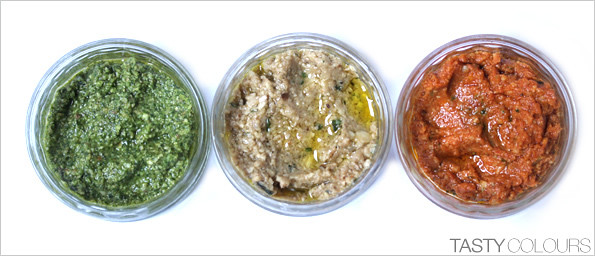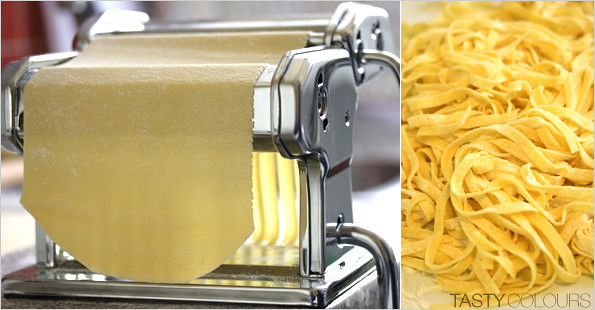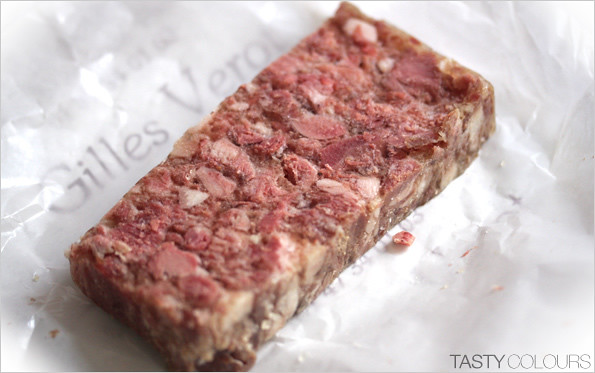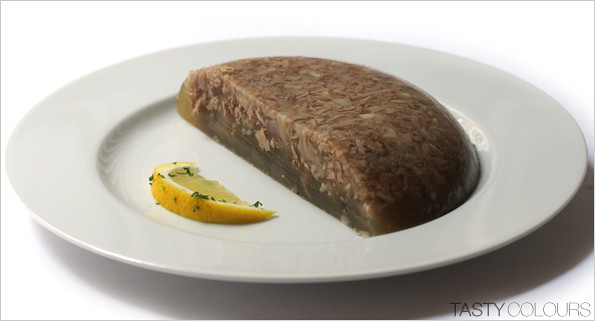Do you prefer risotto or pasta? Do you picture yourself in the noodle or the rice fraction?
Last winter we cooked a lot of risottos. When I eat a creamy risotto, I am convinced that I come from the risotto fraction. On the other hand, when I taste savory al dente pasta, I am not so sure anymore. I think I like both pasta and risotto evenly.
Although it is easy, these days, to get dry or fresh Italian noodles of good quality, we wanted to buy an Italian pasta machine for a long time. However, a couple of weeks ago I got one as a birthday gift from my husband’s aunt, Joëlle. We “baptized” it rolling out Polish-style pasta dough for pierogi with potato and cheese.
To my surprise, finding, in our neighborhood, durum wheat flour, which is necessary for al dente Italian pasta, was a pain in the neck. The closest, and, as we were convinced, one of the best food stores – La Grande Epicerie de Paris, simply does not carry it. My husband checked with all Italian grocery stores located in our arrondissement, and came back empty handed. In one of these stores, all eight packs of durum flour - totaling 8 kilos - had just been purchased by someone. In a second store, another few kilos had just been bought out the same day, most likely by the same mysterious pasta maker…
Finally, we searched the 14th arrondissement and found a place which we will keep secret for the time being...
For our tagliatelle presented today, we decided to use a recipe taken from the booklet enclosed with the pasta machine. This recipe is quite good. However, I only started searching for fresh pasta recipes, so if anyone of you reading this post has an Italian grandmother, please, share the recipe.
We did not make pesto for quite a while and Karolina reminded me how easy, tasty and good it is.
Making pesto is a genius idea for its endless possibilities to use your favorite ingredients: fresh vegetables, herbs, leaves, nuts, cheeses, including tofu. It is genius in its simplicity. The final effect is always positively surprising taking into account the amount of work implied. I love pesto also because you can use it as a savory garnish to various dishes, starting from pasta, then gnocchi, polenta, sandwiches, tartines, grilled meat or fish, soups, salads, tarts, pizza, French galettes au sarasin. You can even garnish some Polish style pierogi, Polish style gnocchi (kopytka; kluski slaskie), even sometimes Polish style kasha, and other cereals.
While classical pesto Genovese and Provencal pistou remain my favorite, curiosity always pushes me to search for new mixtures and to try new recipes.
My first experience with pesto, however, was not yummy. It was maybe 15 or more years ago, when I bought my first jar of industrial pesto Genovese. I can remember until today how ugly it was. At that time, fresh herbs were not available in stores so you could forget about homemade pesto Genovese.
Once I started to plant fresh herbs, and fresh herbs became available at least in summer, I started preparing homemade pesto on a regular basis.
When preparing variations of it, I do not follow any particular recipe, however I regularly check what appears on culinary blogs; I rather trust my intuition to find my favorite taste, smell and texture, like last time, when I made three kinds of pesto which colours I chose to be those of the Italian flag – the green one with arugula and basil; the red one with semi dried tomatoes and baked red bell pepper and the white one with baked eggplant and garlic.
Holding a plate with fresh al dente pasta mixed with “umami” pesto I am looking at it and I am pondering whether the smell of it or the taste of it is the better one… Should I just eat it or simply stare at it and enjoy the smell? Paired with a glass of wine, on a warm summertime evening, one does not need anything else to feel happy and relaxed for a while.
I make my pesto in a food processor. This is not what is advised in classical recipes, but being occupied by duties of daily life, I do not have time to use the classical techniques.
Surfing on various culinary blogs and reading books and culinary magazines, I found so many variations, mixtures and ideas for pesto, some more traditional, some more avant-garde. I simply noted some ideas in my mind a while back, and I am not able to recall where they came from. Most of recipes use pine nuts, almonds or walnuts, as well as pistachios, macadamia and other nuts; hard cheeses, like parmiggiano or pecorino, and garlic, as well. Some use balsamic, others use wine or sherry vinegar. Maybe you will find below something that will appeal to you?
- Your favorite green herb, favorite hard cheese, garlic and, favorite nuts
- Spinach, garlic, favorite nuts and hard cheese, lemon zest
- Grilled beats, garlic, favorite nuts and hard cheese, orange skin and hard goat cheese
- Radish leaves, favorite nuts and hard cheese, garlic
- Kale, garlic, favorite nuts and cheese
- Tofu, garlic, basil and favorite nuts
- Fava beans, basil, garlic, favorite nuts and hard cheese
- Green peas, favorite herbs, hard cheese and pine nuts
- Starflower, garlic, favorite nuts and hard cheese
- Yellow bell pepper, hazel nuts, favorite cheese and garlic
- Strawberries and basil
- Pistachios, hard cheese, garlic
- Walnut, thyme
- Salade romaine, parsley, favorite hard cheese
- Almonds, basil, ricotta and olives
- Sage, walnuts, parsley, favorite hard cheese
- Walnuts, basil, mushrooms
- Yellow bell peppers, orange flower water, orange skin, favorite hard cheese
- Green asparagus, basil, mint, lemon balm, favorite hard cheese
- Coriander, wasabi, sesame seeds, lime
- Coriander, cashew nuts
- Artichokes, almonds, parsley
- Carrots, garlic, favorite hard cheese and herbs
Green Arugula and Basil Pesto with Walnuts (makes one jar around 300 ml)
Ingredients:
180 g fresh arugula, washed and drained
1 bunch fresh basil, washed and drained
50-100 ml good olive oil (depending on your individual taste)
3 garlic cloves, peeled
40 g walnuts
40 g grated parmigiano regiano
Grated lemon zest from ½ lemon, preferably organic
Preparation:
On a hot frying pan, grill walnuts evenly for about 5 to 6 minutes and let them cool down.
Put all the ingredients (except for olive oil) in your food processor or a blender. Process the ingredients in short pulses until nearly smooth (remember however, that you should still see tiny pieces of all ingredients). If necessary, scrap down the sides of the processor’s bowl.
Then remove your thick pesto from the processor’s bowl and place it in another bowl. Add olive oil little by little, mixing constantly and checking your preferred texture. Taste and eventually add some salt and pepper; however I do this only once the pesto is already mixed with the noodles.
Mix immediately with hot noodles. If you do not like thick pesto, add a bit of cooking water from pasta into the bowl which you mix your noodles in. The excess of pesto may be placed in a jar or an airtight container, and stored in a fridge up to few days. You can eventually freeze it.
Red Dried Tomatoes and Grilled Red Bell Pepper Pesto with Pine Nuts (makes 1 jar around 300 ml)
Ingredients:
250 g half dried tomatoes (you may use dried tomatoes as well)
2 garlic cloves, peeled
4-5 basil leaves, washed and drained
1 red bell pepper
1 pinch powdered chili
40 g pine nuts
40 g grated pecorino romano
50-100 ml olive oil (depending on your individual preferences)
Preparation:
On a hot frying pan, grill pine nuts evenly for about 3 to 4 minutes and let them cool down.
Preheat oven until 180 degrees. Place your bell pepper on a baking sheet and bake it for about 30 to 40 minutes, or until its skin is well grilled and does not stick to the bell pepper anymore. Flip the bell pepper occasionally, so it will bake evenly.
Remove the bell pepper from the oven, put into a plastic bag and let cool down. Then remove it from the bag, place it on a cutting board, and cut it along. Remove gently its stem, the seeds and peel the skin using a small and sharp kitchen knife.
Put all the ingredients (except for olive oil) in your food processor or blender. Then follow the actions described in the green pesto preparation above.
White Eggplant and Garlic Pesto with Walnuts (makes 1 jar of around 220 ml)
Ingredients:
1 medium sized eggplant (around 300 g), washed and wiped
3 medium garlic cloves, peeled
40 g walnuts
40 g pecorino romano cheese, grated
4-5 basil leaves
50-100 ml olive oil
Preparation:
On a hot frying pan, grill walnuts evenly for about 5 to 6 minutes and let them cool down.
Preheat oven until 180 degrees. Prickle the eggplant with a knife all over. Cut 2 garlic cloves into quarters and place them into slits. Place the eggplant on a baking sheet and bake it for about 30 to 40 minutes, or until its skin is well grilled. Flip the eggplant occasionally, so it will bake evenly.
Remove it from the oven, and let cool down a bit. Place it on a cutting board, and cut the eggplant along into halves. Remove gently its stem, the seeds and skin using a small and sharp kitchen knife.
Put all the ingredients (except for olive oil) in your food processor or blender. Then follow actions described in green pesto preparation above.
Homemade Tagliatelle
Serves about 6
Ingredients:
250 g soft wheat flour
250 g durum wheat flour
5 eggs (room temperature)
Preparation:
Pour the flour into a bowl and the eggs into the middle of the flour. Mix the eggs with a fork until they are completely blended with the flour. Knead the mixture with your hands, until it is completely homogenous and consistent. If the mixture is too dry add some water, if it is too soft add some flour. A good mixture should never stick to your fingers. Remove the mixture from the bowl and place it onto a lightly floured table. If necessary, continue to knead the dough.
Divide the dough into 3 or 4 equal parts.
Place the first part on your working table.
Wrap the rest in a plastic film and put aside.
Sprinkle some flour on your station and start rolling out the dough until it is 2 to 3 millimeters thick.
Occasionally, flip the dough and sprinkle some flour over it so it does not stick to the table.
When the dough is rolled out, sprinkle a bit of flour, roll and then cut across finely (they should be around 0,5 cm wide). Mix the noodles, sprinkle with some more flour so it will not get sticky and it may dry out a bit.
In a large saucepan, bring water to a boil and add some salt and a bit of oil.
Put the noodles into boiling water and cook al dente between 2 to 3 minutes, depending on their thickness. Then strain the noodles, and keep a bit of cooking water in the saucepan. Mix the noodles with pesto, according to your taste. Serve immediately, sprinkled with some more cheese, basil leaves, salt and pepper.















